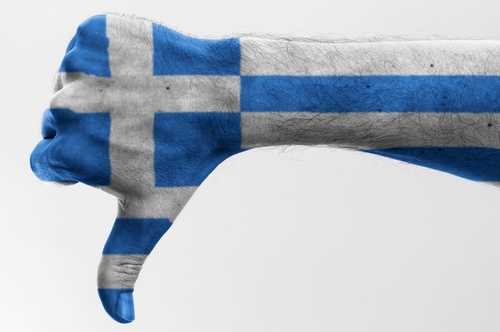 By Richard Barley, The Wall Street Journal
By Richard Barley, The Wall Street Journal
The default is done, long live the default debate.
Greece’s latest bailout includes a “soft” default, with private investors being asked to accept a “voluntary” debt restructuring. But the menu of choices on how to take that pain immediately forces them to decide if, and when, they think Greece faces a “hard” default further down the road.
The bond exchange, covering Greek debt maturing between 2011 and 2020, offers four options. Option one involves investors exchanging all their bonds at once for new 30-year bonds at par with a coupon that starts at 4% and rises over time to 5%. Option two is the same except investors roll over bonds as they mature. Under option three, investors take a 20% hit up front, but receive a 30-year bond with a higher coupon, rising from 6% to 6.8%. Option four has the same 20% hit but offers a 15-year bond with a 5.9% coupon. For options one through three, principal repayment is guaranteed by a zero-coupon 30-year bond issued by a triple-A borrower. For option four there is a complex cash escrow arrangement that covers losses partially.
The International Institute of Finance, which designed the debt swap, says that discounted at 9%, each option will leave investors with a 21% loss in net present value. For instance, under option one, the interest payments discounted at 9% are worth 46.3% of par, while the 30-year zero-coupon bond is worth 32.7%, giving a price of 79% of face value, Barclays Capital notes.
Each investor’s choice will be influenced by which bonds they hold and how they account for them. But in addition, each instrument offers a different blend between risky interest payments—which would stop if Greece defaults—and largely risk-free principal. Under option three, in particular, more of the present value of the bond is down to risky coupon payments than the principal, which is reduced up front by 20%. In fact, assuming Greece defaults after three annual coupon payments, the bond in option three is worth just 42.1% of par, Deutsche Bank estimates, while option four would be worth 51.2%. It would take 12 years without default before the higher coupons in option three make it more attractive than option one, the most directly comparable, the bank says.
Then there is the added complication that some investors may take their chance and hold out for full repayment—after all, the exchange is “voluntary.” The risk of default on the new bonds will remain very real: Debt to GDP will still be a whopping 130% at the end of 2011 and growth remains uncertain, particularly as Greece cuts spending aggressively.
With all the options ostensibly offering similar value, investors should look to guarantee as much of their principal as they can.








